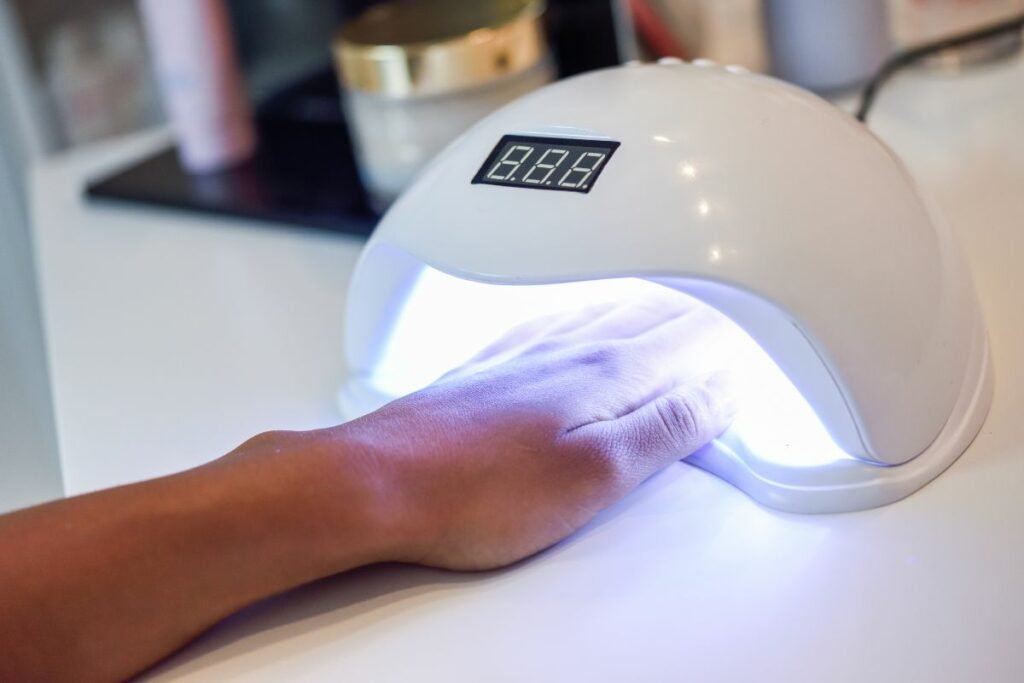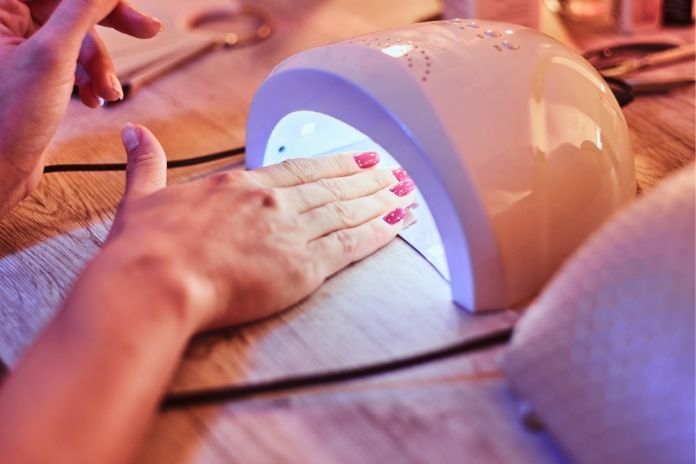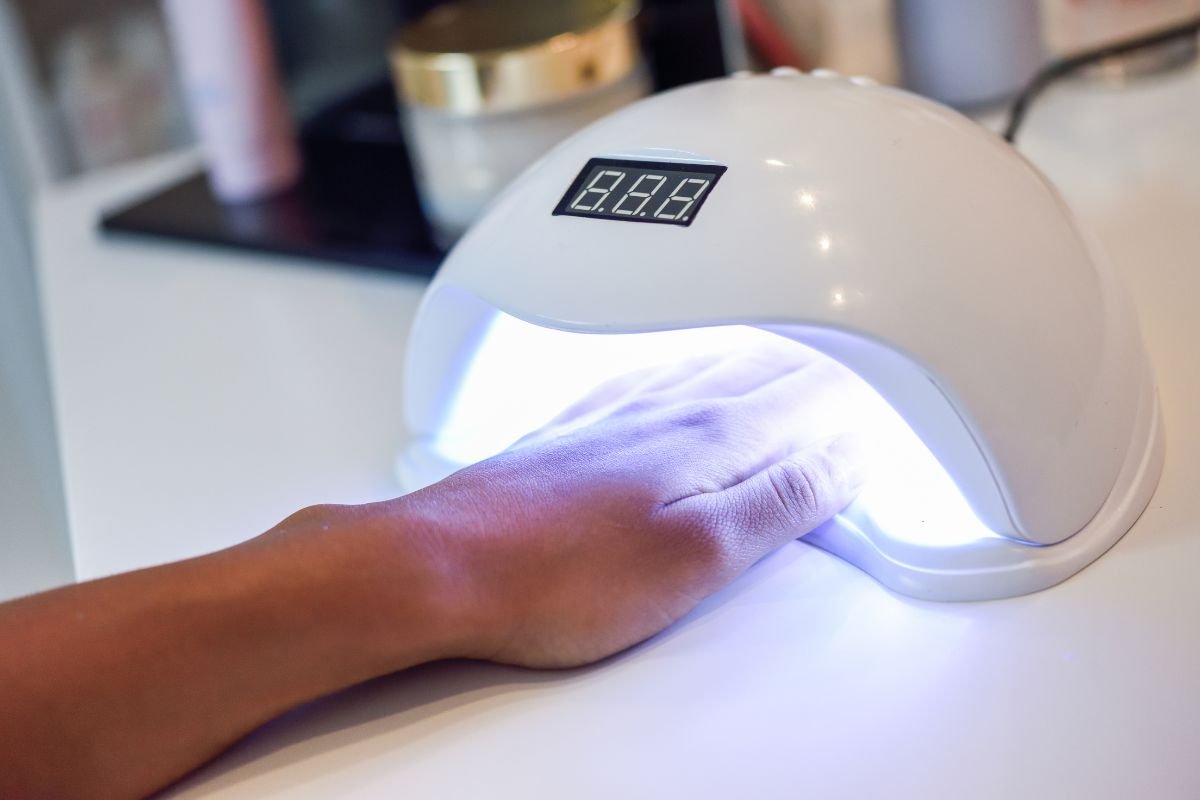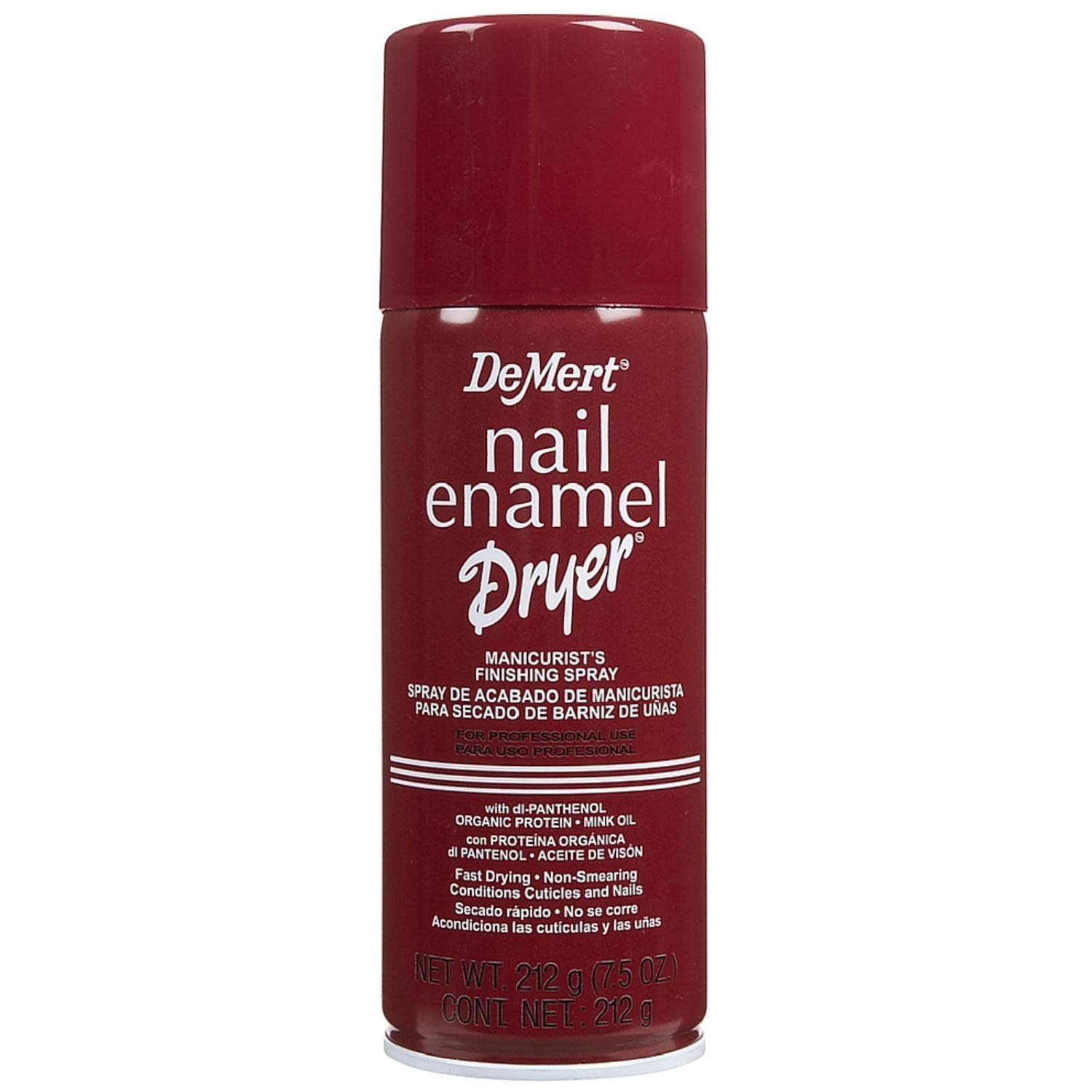While it’s true that UV light will not help dry regular nail polish faster, it is safe to use a UV lamp on them. Here’s the corrected information:
Regular nail polish and UV light:
- Regular nail polish dries through solvent evaporation, and UV light doesn’t affect this process.
- Therefore, exposing your nails to a UV lamp won’t speed up drying, but it also won’t cause any harm to the polish itself.
- While UV lamps emit small amounts of UVA radiation, the short exposure during polish drying is considered negligible in terms of health risks.
However, it’s important to consider:
- Drying effectiveness: Using a UV lamp for regular polish won’t offer any drying benefits. Sticking to traditional methods like air drying, quick-drying formulas, or fan assistance is better.
- Potential downsides: The heat emitted by the lamp might still affect your nails, so avoid prolonged exposure. Additionally, frequent UV exposure isn’t ideal, so use the lamp sparingly.
Contents
Why Does UV Light Cure Gel Polish?
Gel polishes do not dry like normal polishes. They dry or cure with the help of a chemical reaction and UV light from either a UV or LED lamp.
Gel polishes contain Photoinitiators that react with UV light to make the polish harden and cure.
Does UV Light Dry Regular Nail Polish?
While it might be tempting to try a UV lamp to speed up drying time, it’s not recommended to use them on regular nail polish. Here’s why:
Regular nail polish dries through evaporation:
- Unlike gel polish, which requires UV/LED light to cure and harden, regular polish dries by its solvents evaporating into the air.
- UV light doesn’t affect this process; it may even make the polish dry unevenly and cause bubbling.
Potential drawbacks of using UV lamps:
- Heat: While the UV light itself doesn’t dry the polish, the lamps do emit heat. While generally safe in moderation, excessive heat can damage your nails and cuticles.
- UV radiation: Both UV and LED lamps emit a small amount of UVA radiation, which can contribute to premature aging and skin cancer. While the risk is considered low for occasional use, frequent exposure is better avoided.
Better alternatives for drying regular polish:
- Air drying: Let your nails air dry naturally. Applying thin coats and using a quick-drying formula can help speed things up.
- Fan: Using a fan directed at your nails can significantly improve drying time.
- Cold water immersion: Briefly dipping your nails in cold water can help set the polish and prevent smudging. However, ensure the water isn’t too cold to avoid discomfort.
Best way to dry regular nail polish more quickly

Invest in a Nail Fan
A nail fan is a fan that is designed to dry regular nail polish. The fan helps the polish dry faster by blowing warm air over the nails. If you use a fan, your polish will dry faster by 30-40%.
Use a Nail Polish Drying Spray
Nail Polish Drying Sprays work by utilizing special chemicals that speed up the rate of evaporation of liquids within your nail polish.
They’re one of the most common types of nail polish removers. They work very well and can dry your nail polish in a matter of minutes.
Apply Thin Coats
One way to make your nail polish dry faster is to apply thin coats of it.
I have found that using multiple thin coats of regular nail polish instead of one or two thick coats finishes the manicure faster.
Use a hairdryer
After you apply your nail varnish, turn on your hairdryer to the coldest setting and hold it six inches away from your nails. Blow-dry them for around a minute before storing them.
Use Hairspray
After painting your nails, wait for them to dry for a minute before taking them off. Hold the can about 8 inches away from your nails and spray them with hairspray while keeping it that distance. After a minute, wash your hands with cold water to get rid of the sticky residue.
Use ice water instead of regular water
Instead of using hairspray, you can use ice water. You will need to do this before you put on any polish.
These are the steps:
- Unpainted fingernails can be soaked in cold water. A few ice cubes in the bath will assist.
- Soak your nails in water for a few minutes to soften them.
- You should put on your favorite nail polish.
- If you do this, the drying time will be shortened.
Can You Use Gel Top Coat Over Regular Polish?
No. It is not recommended to apply a Gel Polish topcoat to regular nail polish.
The regular polish dries differently than gel polish. It is also made from different materials. When Gel polish dries, it dries quickly in about 30-60 seconds. This means that any moisture that is left under your Gel top coat will be trapped.
How to make regular nail polish last like gel?
While achieving the ultra-durable, long-lasting finish of gel polish with regular polish isn’t quite possible, there are some techniques and product choices that can help you extend the life of your manicure and get it closer to gel-like performance.
Prep is Key
Before you start painting your nails, make sure they’re clean and dry. Remove any old polish thoroughly with a remover that doesn’t contain acetone. Gently exfoliate your nails and cuticles to remove dead skin and oils. Then, wash and dry your hands completely.
Lightly buff your nails with a fine-grit buffer to create a smooth surface for better polish adherence. But be careful not to buff too hard, as this can weaken your nails.
To ensure good adhesion, use a non-oily nail dehydrator or swipe each nail with a rubbing alcohol pad to remove any lingering moisture.
Choose the Right Products
Using the right products can make a big difference in how long your manicure lasts. Start with a high-quality base coat designed to improve grip and prevent staining. Apply a thin layer to all ten nails.
When choosing nail polish, look for ones labeled as “long-lasting” or “chip-resistant.” Quick-drying formulas can also help minimize smudging during application. Apply thin coats in two to three layers, allowing each layer to dry completely before applying the next.
Finish off your manicure with a high-quality, quick-drying top coat. Gel-like top coats can offer extra shine and durability. Apply a generous layer, making sure to cap the free edge of each nail for added protection.
Post-Application Care
After you’ve finished painting your nails, try to avoid prolonged contact with water for at least 24 hours. If you need to do chores or activities that involve water, consider wearing gloves to protect your manicure.
Regularly moisturize your nails and cuticles with cuticle oil to keep them healthy and hydrated. This will provide a good base for your polish to adhere to and help prevent chipping.
Every few days, touch up your manicure by reapplying a thin layer of top coat to refresh the shine and seal any minor chips.
Additional Tips
Avoid using acetone-based removers, as they can dry out your nails and weaken the polish. Opt for acetone-free removers if needed.
After removing your polish, apply cuticle oil to nourish your nails and help them recover.
Consider incorporating nail strengtheners into your regular nail care routine to strengthen your nails and make them more resistant to damage.
In short,
- Don’t get too wet.
- Use a nail file to make the nails smoother.
- It’s also a good idea to avoid obtaining polish on your cuticles.
- Push your cuticles back.
- Use nourishing and conditioning polishes.
- Use a chip-resistant top coat.
- Allow your polish to dry completely.
- Use a hairdryer in cool air to finish it off.



